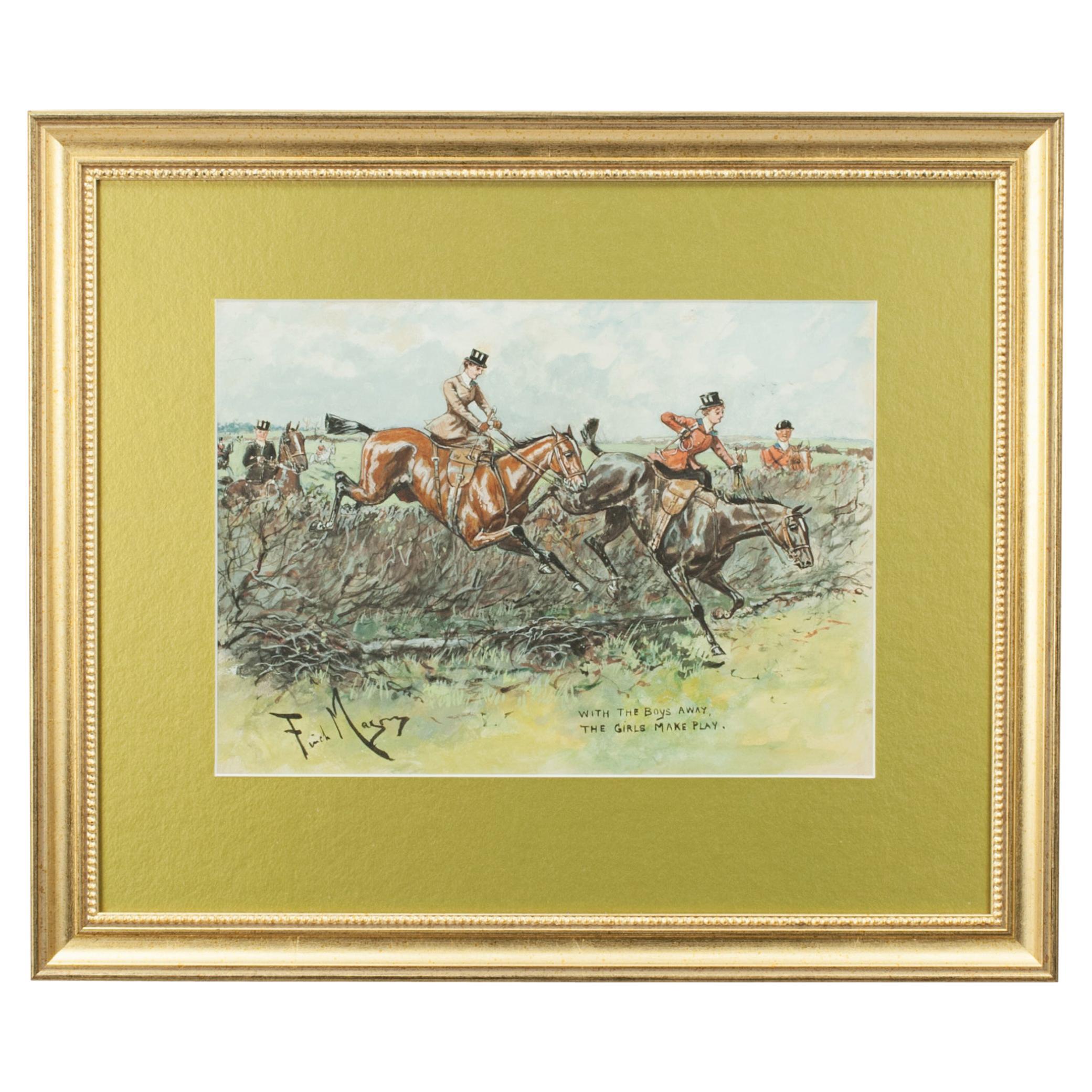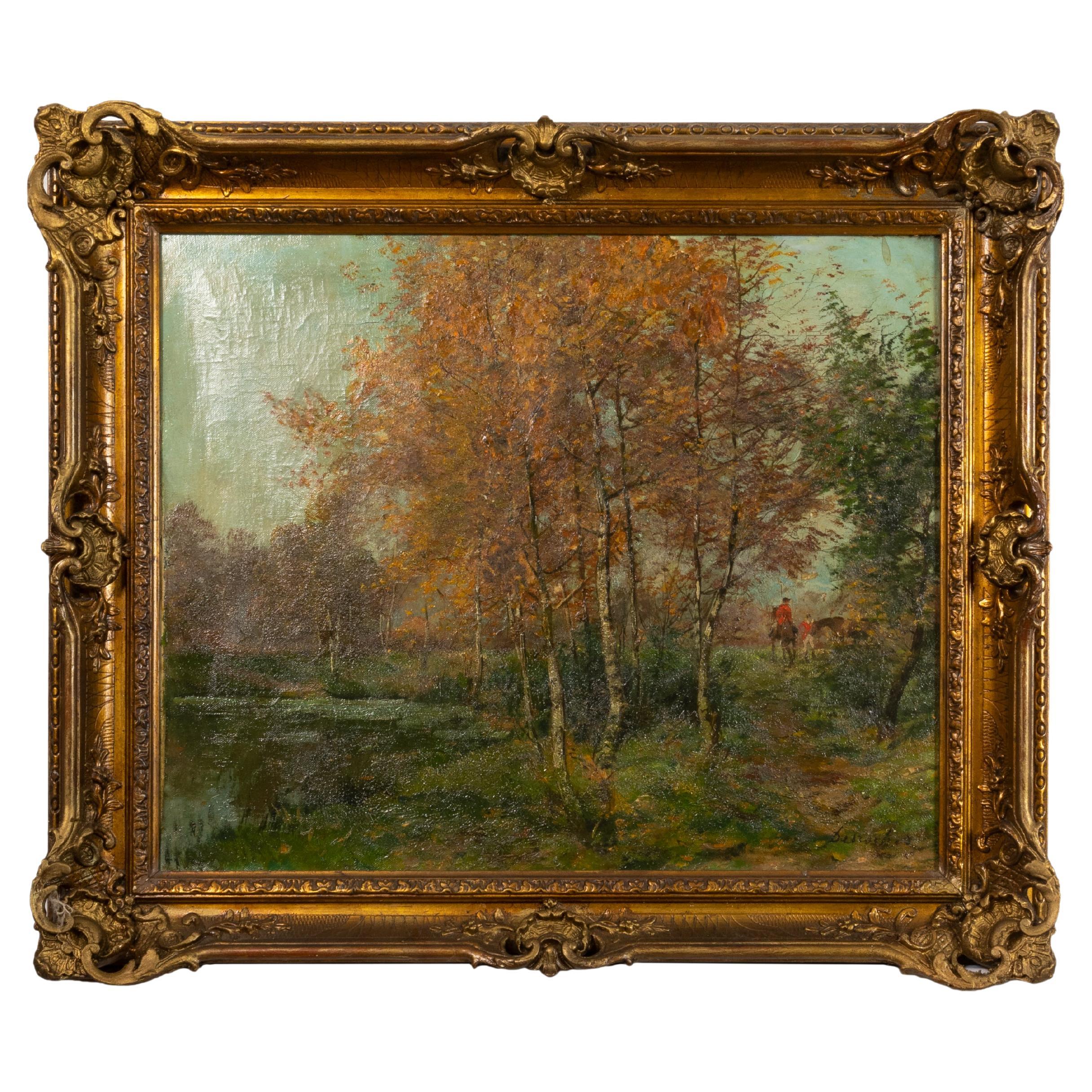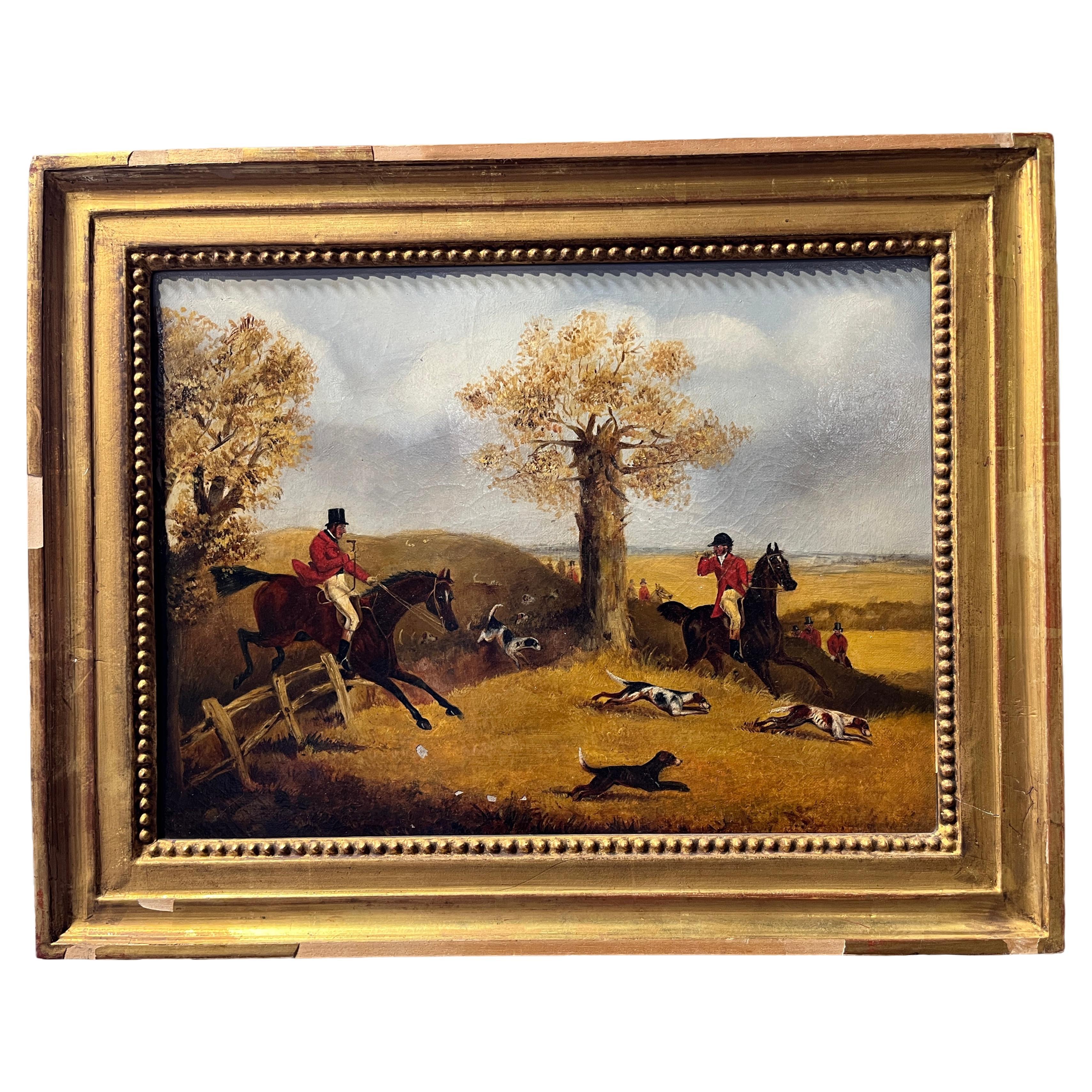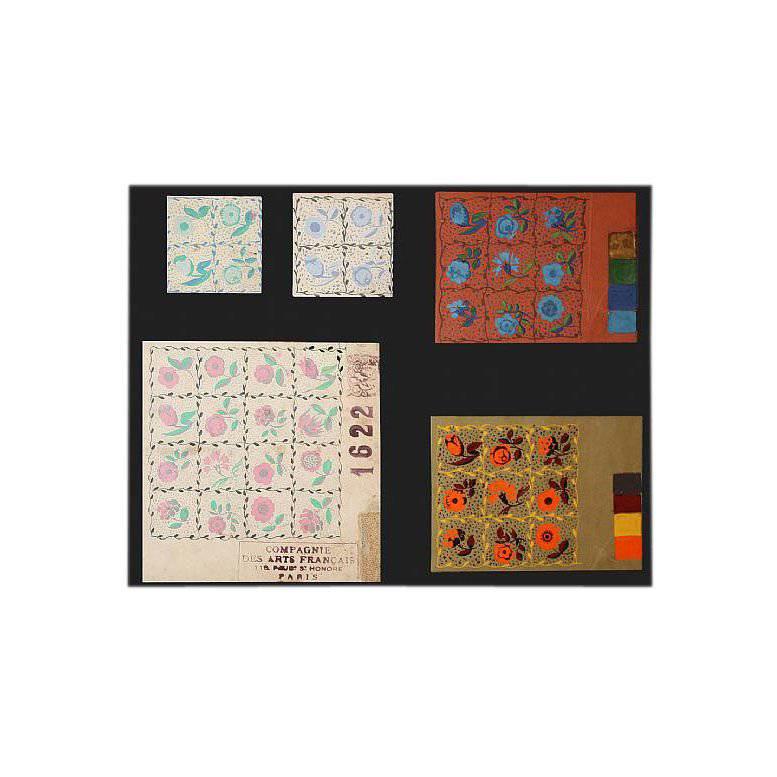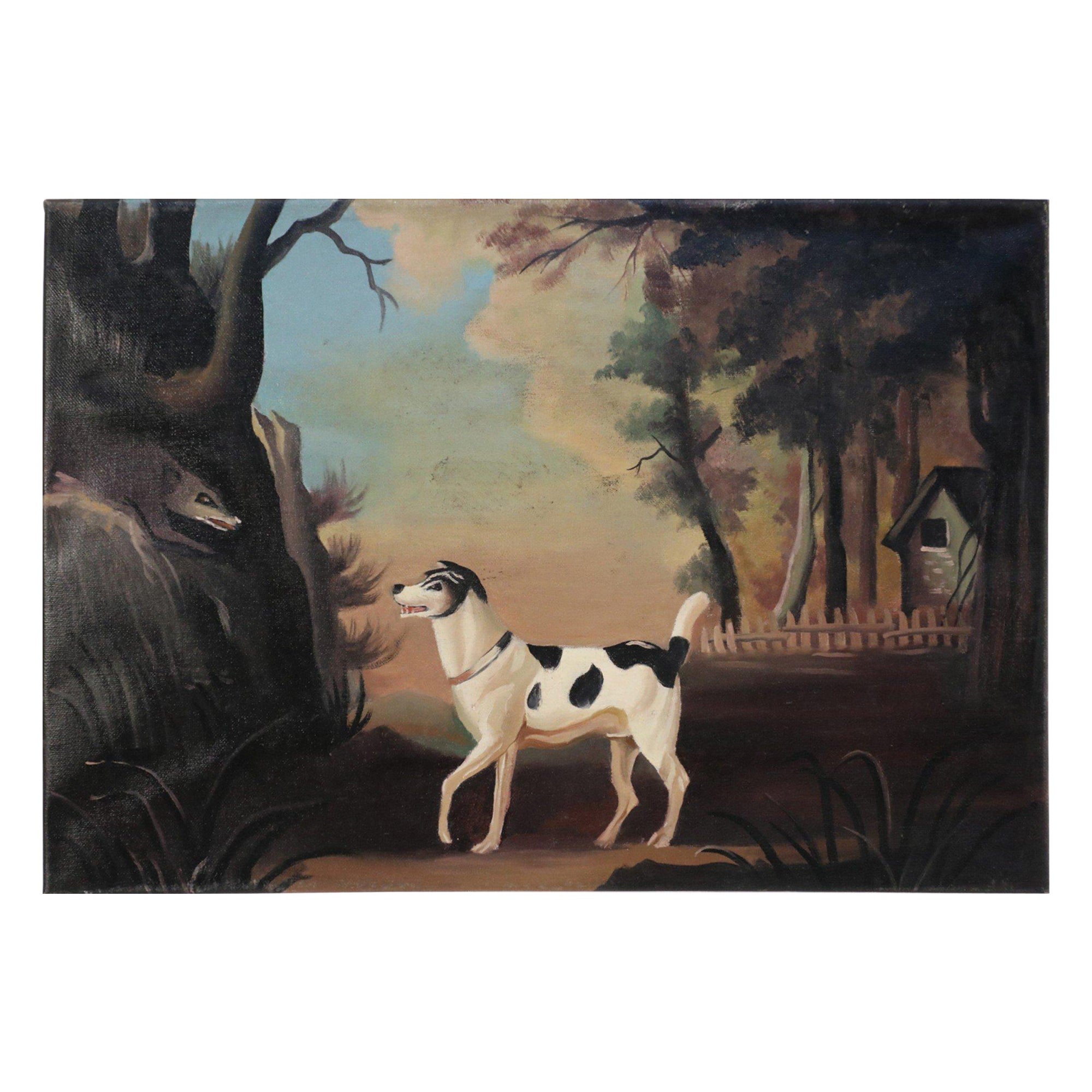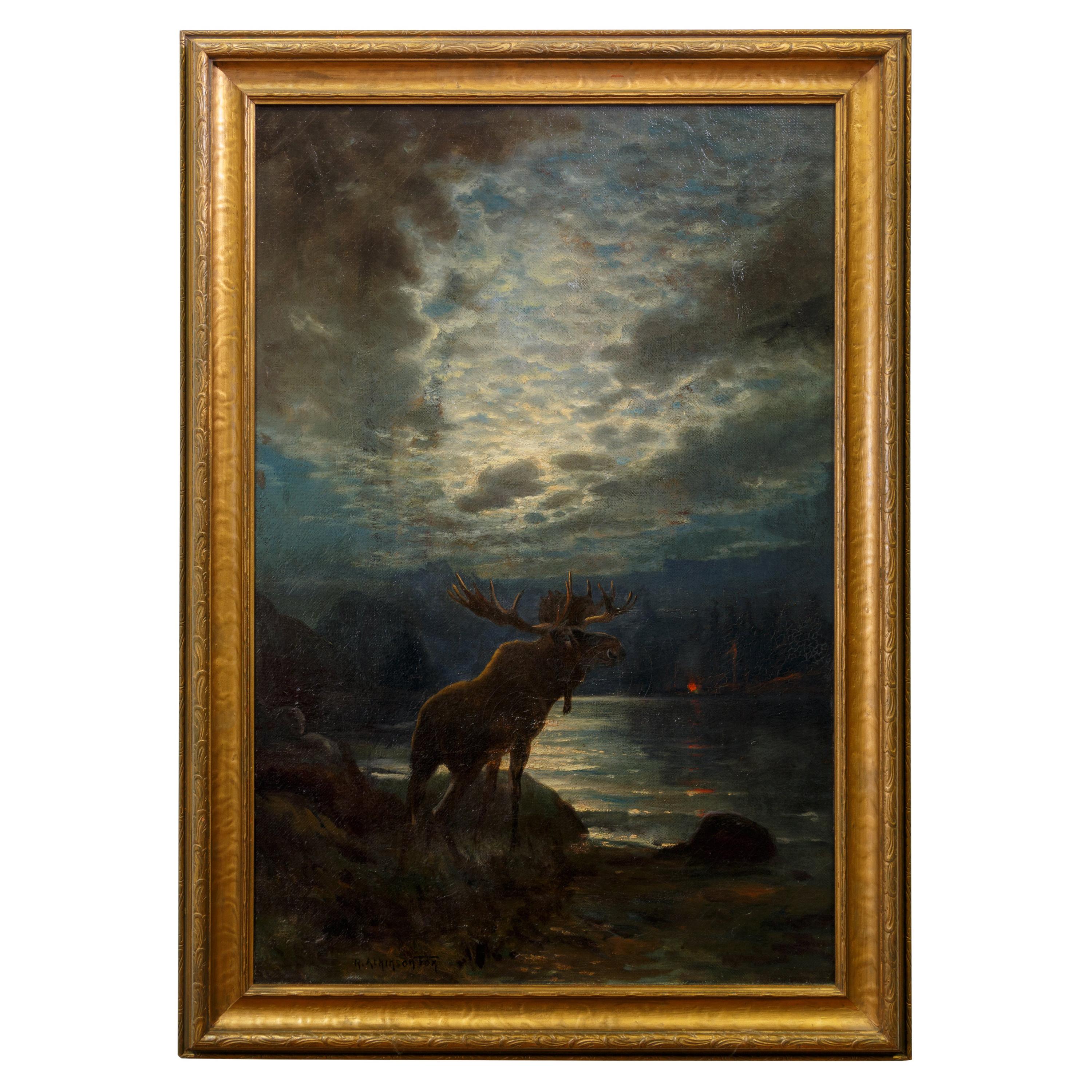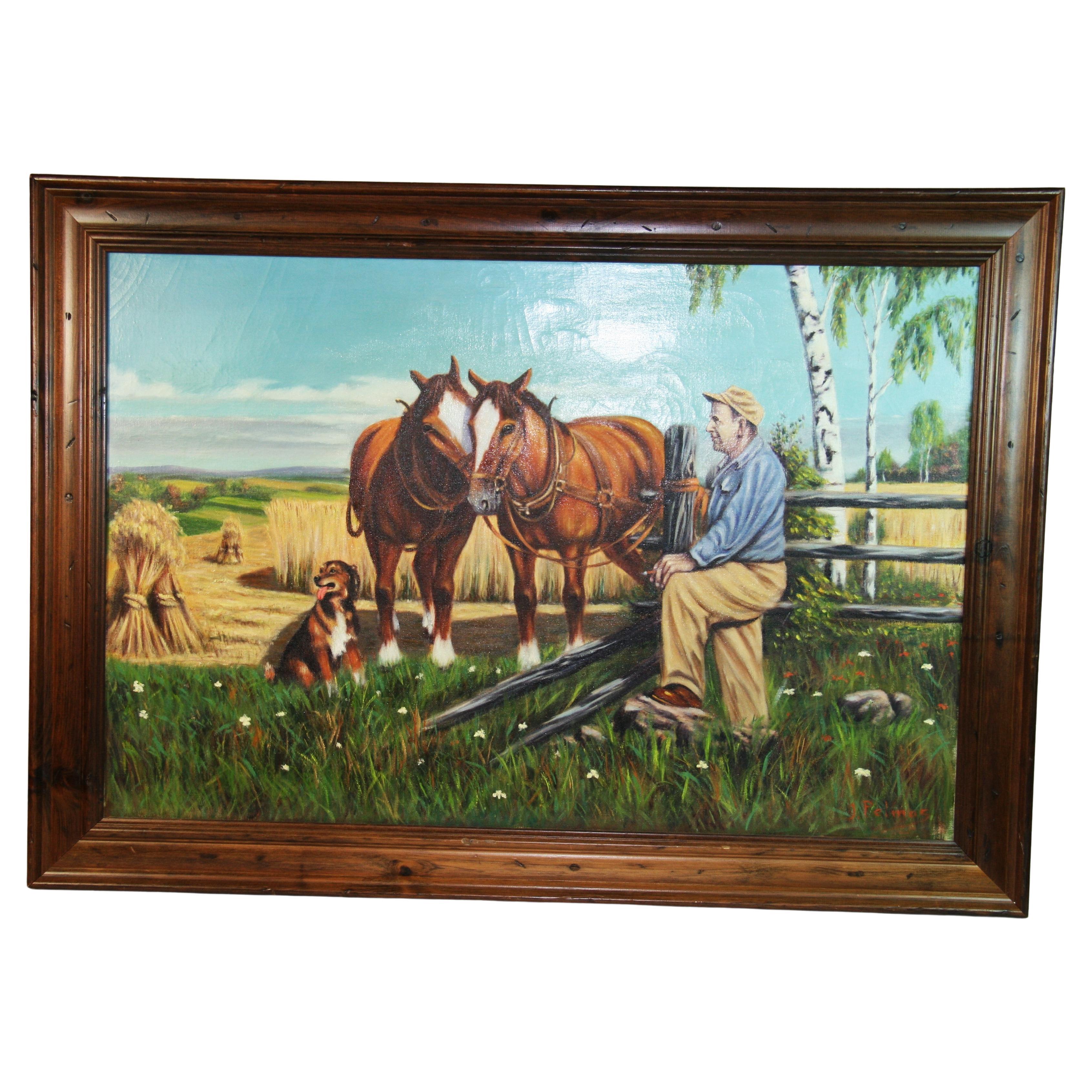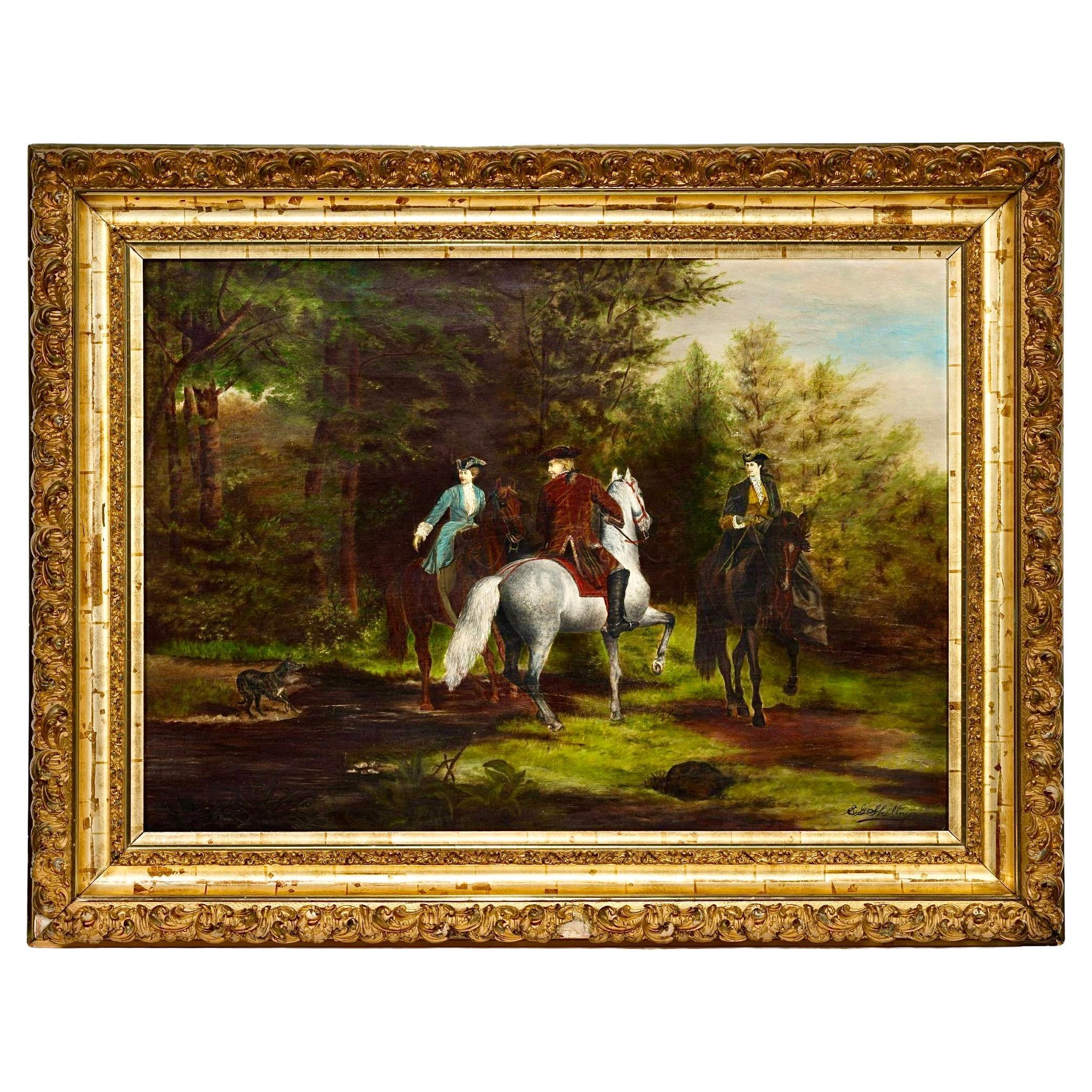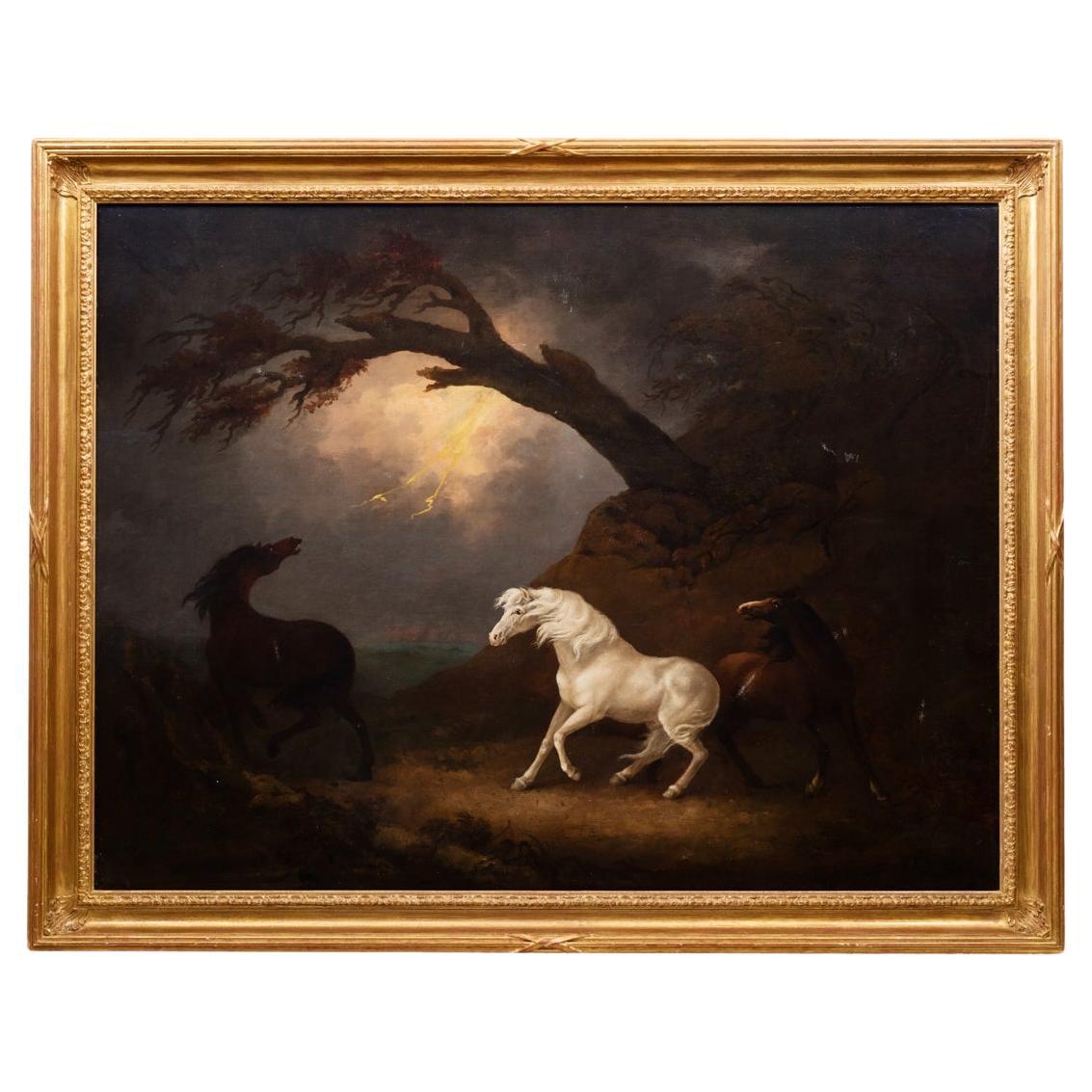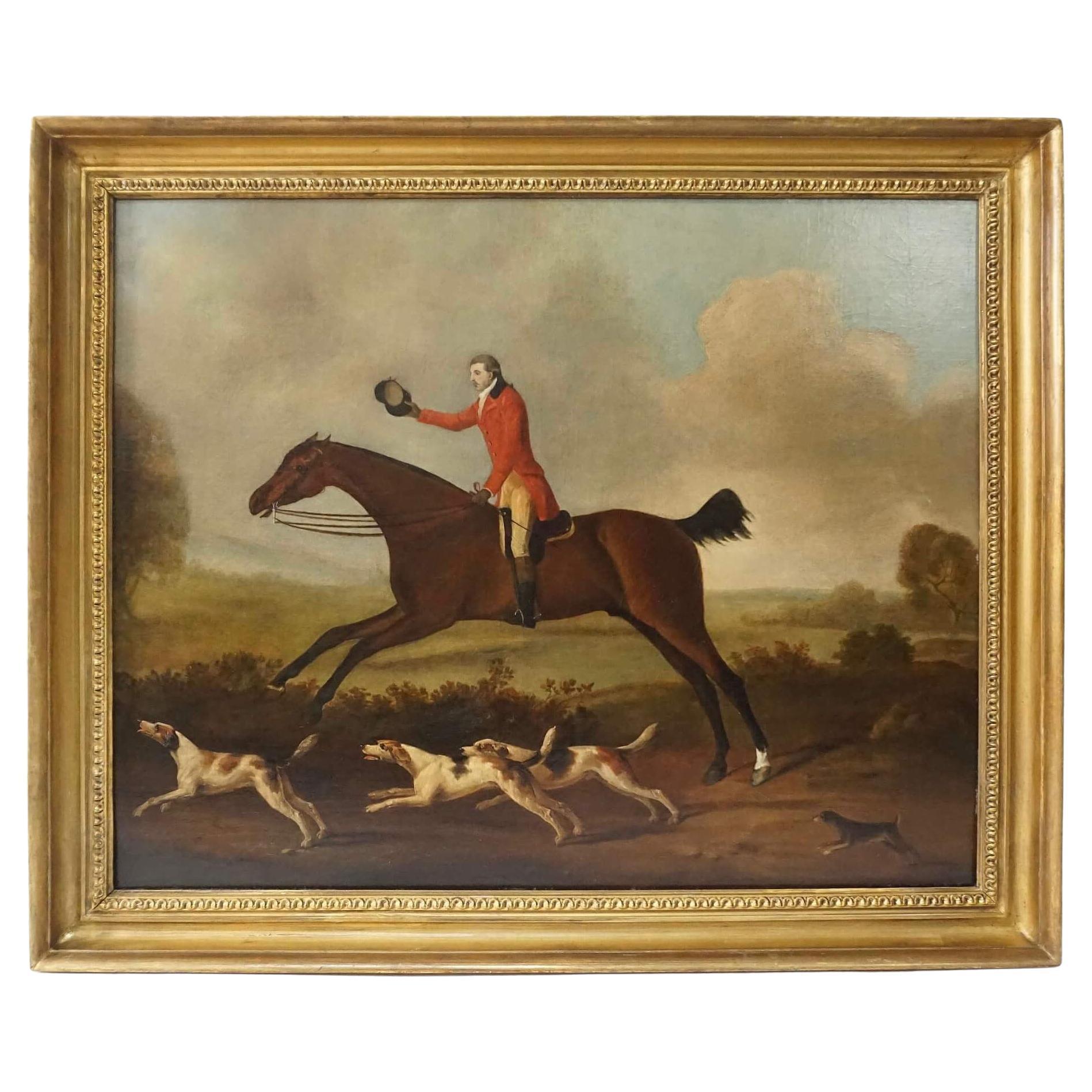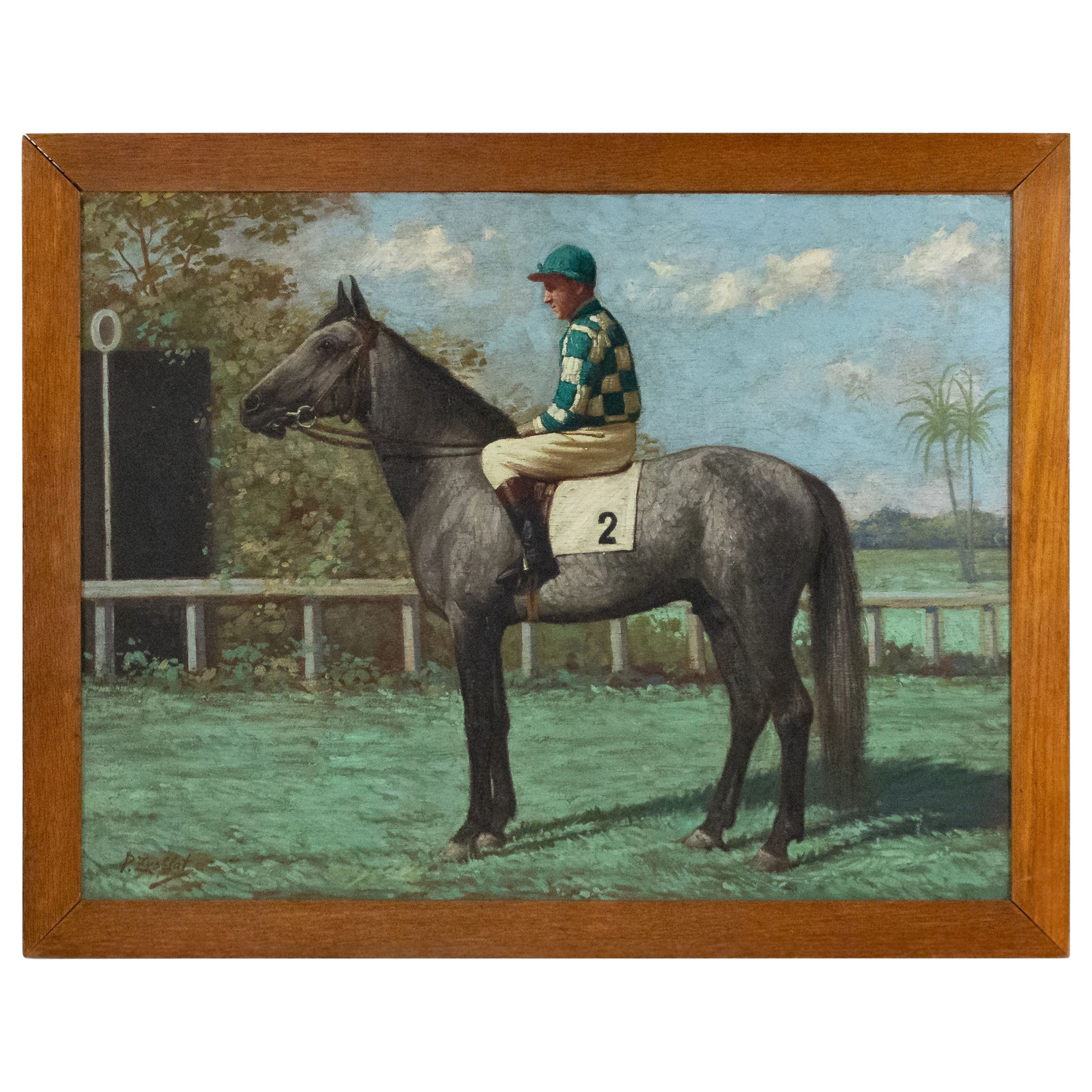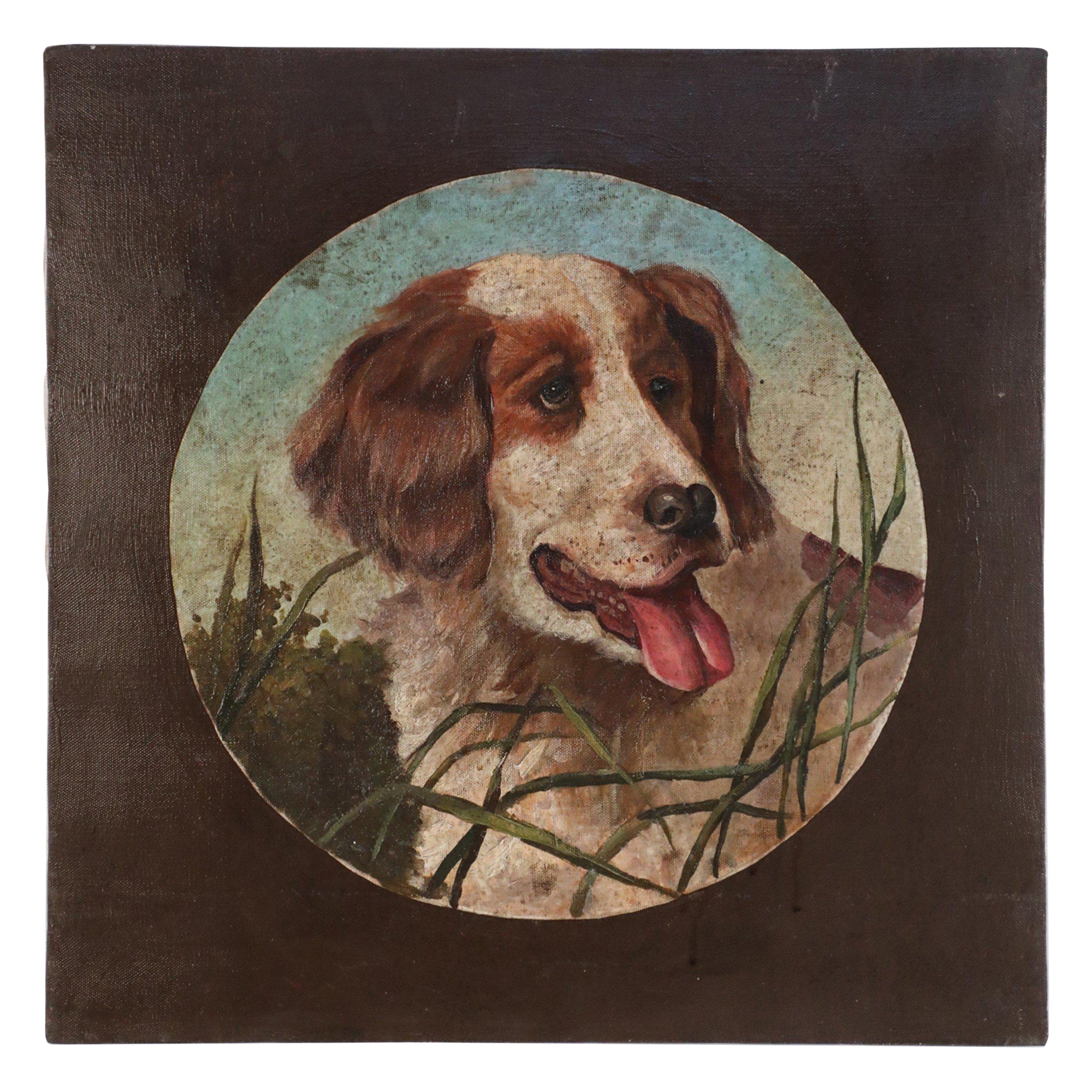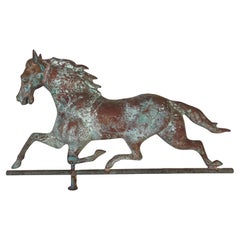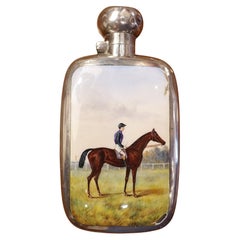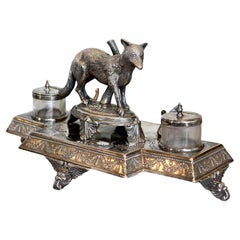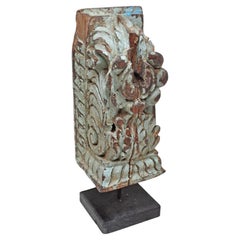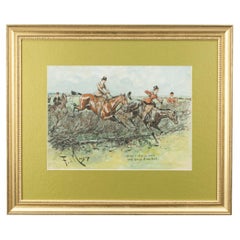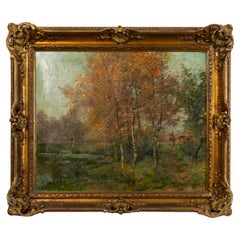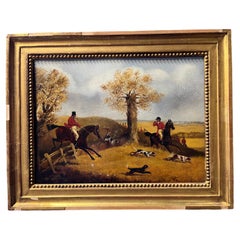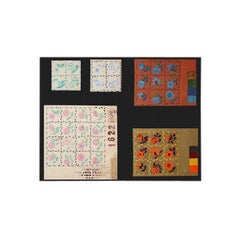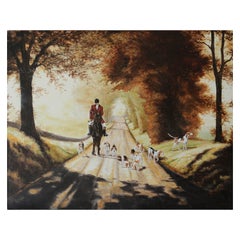
Original Equestrian Fox Hunting and Hounds oil painting by Sue Kelleher
View Similar Items
Want more images or videos?
Request additional images or videos from the seller
1 of 8
Original Equestrian Fox Hunting and Hounds oil painting by Sue Kelleher
About the Item
- Dimensions:Height: 24 in (60.96 cm)Width: 30 in (76.2 cm)Depth: 1 in (2.54 cm)
- Style:Sporting Art (Of the Period)
- Materials and Techniques:
- Place of Origin:
- Period:
- Date of Manufacture:2006
- Production Type:New & Custom(One of a Kind)
- Estimated Production Time:Available Now
- Condition:
- Seller Location:Leesburg, VA
- Reference Number:1stDibs: LU8166235364722
About the Seller
4.7
Vetted Professional Seller
Every seller passes strict standards for authenticity and reliability
Established in 2013
1stDibs seller since 2023
40 sales on 1stDibs
Typical response time: 2 hours
Authenticity Guarantee
In the unlikely event there’s an issue with an item’s authenticity, contact us within 1 year for a full refund. DetailsMoney-Back Guarantee
If your item is not as described, is damaged in transit, or does not arrive, contact us within 7 days for a full refund. Details24-Hour Cancellation
You have a 24-hour grace period in which to reconsider your purchase, with no questions asked.Vetted Professional Sellers
Our world-class sellers must adhere to strict standards for service and quality, maintaining the integrity of our listings.Price-Match Guarantee
If you find that a seller listed the same item for a lower price elsewhere, we’ll match it.Trusted Global Delivery
Our best-in-class carrier network provides specialized shipping options worldwide, including custom delivery.More From This Seller
View AllPatinated and Oxidized Equestrian Dexter Antique Copper and Zinc Weather Vane
By Cushing and White
Located in Leesburg, VA
Beautifully Patinated and Oxidized Full Bodied Equestrian Dexter Antique Copper and Zinc Weather Vane
Probably Cushing & White
ca. 1867-72; Waltham, MA, USA
Copper, zinc
Approximat...
Category
Antique 1860s American Folk Art Weathervanes
Materials
Copper
Early 20th century English Enamel Equestrian Silver Flask
Located in Leesburg, VA
Early 20th century English Enamel Equestrian Silver Flask
Unidentified Maker
England; early 20th century
Silver, enamel
Approximate size: 6 (h) x 3 (w) x 1.25 (d) in.
Crafted in E...
Category
Early 20th Century English Edwardian Historical Memorabilia
Materials
Silver, Enamel
Antique Silverplated Fox-themed Inkwell by James Deakin & Sons, England
By James Deakin & Sons
Located in Leesburg, VA
James Deakin & Sons Ltd.
Sheffield, England; ca. 1897-1935
Silver plated copper and glass
Approximate size: 11 (w) x 6 (h) x 6 (d) in.
This lovely silver-plated inkwell features an...
Category
Early 20th Century English Victorian Inkwells
Materials
Silver, Silver Plate, Copper
Original Hand-Carved South Asian Antique Architectural Bracket Fragment
Located in Leesburg, VA
Original Hand-Carved South Asian Antique Architectural Bracket Fragment for display
Anonymous
Probably India; early-to-mid 20th century
Wood
Approximate size: 4.2 x 3.8 x 12 in.
A...
Category
Early 20th Century Indian Anglo-Indian Mounted Objects
Materials
Wood, Paint
Rare and important painted bronze Crucifix after a model by Michelangelo
By Michelangelo Buonarroti
Located in Leesburg, VA
A rare and very fine bronze corpus of Christ after a model by Michelangelo, cast ca. 1597-1600 by Juan Bautista Franconio and painted in 1600 by Francisco Pacheco in Seville, Spain.
The present corpus reproduces a model attributed to Michelangelo. The best known example, lesser in quality, is one on display at the Metropolitan Museum of Art (MET).
The association of this corpus with Michelangelo was first brought to light by Manuel Gomez-Moreno (1930-33) who studied the wider circulated casts identified throughout Spain. The attribution to Michelangelo was subsequently followed by John Goldsmith-Phillips (1937) of the MET and again by Michelangelo expert, Charles de Tolnay (1960).
While Michelangelo is best known for his monumental works, there are four documented crucifixes he made. The best known example is the large-scale wooden crucifix for the Church of Santa Maria del Santo Spirito in Florence, made in 1492 as a gift for the Prior, Giovanni di Lap Bicchiellini, for allowing him to study the anatomy of corpses at the hospital there. In 1562, Michelangelo wrote two letters to his nephew, Lionardo, indicating his intention to carve a wooden crucifix for him. In 1563 a letter between Lionardo and the Italian sculptor Tiberio Calcagni, mentions this same crucifix (a sketch of a corpus on the verso of a sheet depicting Michelangelo’s designs for St. Peter’s Basillica [Palais des Beaux-Arts in Lille] may reproduce this). That Michelangelo was working on small corpora in the last years of his life is further evidenced by the small (26.5 cm) unfinished wooden crucifix located at the Casa Buonarroti, considered his last known sculptural undertaking. Michelangelo’s contemporary biographer, Giorgio Vasari additionally cites that Michelangelo, in his later years, made a small crucifix for his friend, Menighella, as a gift.
Surviving sketches also indicate Michelangelo’s study of this subject throughout his career, most notably during the end of his life but also during the 1530s-40s as he deepened his spiritual roots. The occasional cameo of crucified Christ’s throughout his sketched oeuvre have made it challenging for scholars to link such sketches to any documented commissions of importance. All the while, in consideration that such objects were made as gifts, it is unlikely they should be linked with commissions.
Nonetheless, a number of theories concerning Michelangelo’s sketches of Christ crucified have been proposed and some may regard the origin of the present sculpture. It has been suggested that the corpus could have its impetus with Michelangelo’s work on the Medici Chapel, whose exclusive design was given to the master. It is sensible smaller details, like an altar cross, could have fallen under his responsibility (see for example British Museum, Inv. 1859,0625.552). Others have noted the possibility of an unrealized large marble Crucifixion group which never came to fruition but whose marble blocks had been measured according to a sheet at the Casa Buonarroti.
A unique suggestion is that Michelangelo could have made the crucifix for Vittoria Colonna, of whom he was exceedingly fond and with whom he exchanged gifts along with mutual spiritual proclivities. In particular, Vittoria had an interest in the life of St. Bridget, whose vision of Christ closely resembles our sculpture, most notably with Christ’s proper-left leg and foot crossed over his right, an iconography that is incredibly scarce for crucifixes. The suggestion could add sense to Benedetto Varchi’s comment that Michelangelo made a sculpted “nude Christ…he gave to the most divine Marchesa of Pescara (Vittoria Colonna).”
Of that same period, two sketches can be visually linked to our sculpture. Tolnay relates it to a sketch of a Crucified Christ at the Teylers Museum (Inv. A034) of which Paul Joannides comments on its quality as suggestive of preparations for a sculptural work. Joannides also calls attention to a related drawing attributed to Raffaello da Montelupo copying what is believed to be a lost sketch by Michelangelo. Its relationship with our sculpture is apparent. Montelupo, a pupil of Michelangelo’s, returned to Rome to serve him in 1541, assisting with the continued work on the tomb of Pope Julius II, suggesting again an origin for the corpus ca. 1540.
The earliest firm date that can be given to the present corpus is 1574 where it appears as a rather crudely conceived Crucifixion panel, flanked by two mourners in low-relief and integrally cast for use as the bronze tabernacle door to a ciborium now located at the Church of San Lorenzo in Padula. Etched in wax residue on the back of the door is the date, 27 January 1574, indicating the corpus would have at least been available as a model by late 1573.
The Padula tabernacle was completed by Michelangelo’s assistant, Jacopo del Duca and likely has its origins with Michelangelo’s uncompleted tabernacle for the Basilica of St. Mary of the Angels in Rome.
The impetus for the Padula tabernacle’s Crucifixion panel begins with a series of late Crucifixion sketches by Michelangelo, depicting a scene of Christ crucified and flanked by two mourners (see British Museum Inv. 1895.0915.510; Ashmolean Museum Inv. 1846.89, KP II 343 recto; Windsor Castle RCIN 912761 recto; and Louvre Inv. 700). A faintly traced block possibly intended for sculpting the sketch of the crucified Christ on its recto was discovered by Tolnay on a version of the composition at Windsor Castle. The Windsor sketch and those related to it appear to have served as preparatory designs for what was probably intended to become the Basilica of St. Mary’s tabernacle door. Vasari documents that the project was to be designed by Michelangelo and cast by his assistant, Jacopo del Duca. Michelangelo died before the commission was complete, though on 15 March 1565, Jacopo writes to Michelangelo’s nephew stating, “I have started making the bronze tabernacle, depending on the model of his that was in Rome, already almost half complete.” Various circumstances interrupted the completion of the tabernacle, though its concept is later revitalized by Jacopo during preparations to sell a tabernacle, after Michelangelo’s designs, to Spain for Madrid’s El Escorial almost a decade later. The El Escorial tabernacle likewise encountered problems and was aborted but Jacopo successfully sold it shortly thereafter to the Carthusians of Padula.
An etched date, 30 May 1572, along the base of the Padula tabernacle indicates its framework was already cast by then. A 1573 summary of the tabernacle also describes the original format for the door and relief panels, intended to be square in dimension. However, a last minute decision to heighten them was abruptly made during Jacopo’s negotiations to sell the tabernacle to King Phillip II of Spain. Shortly thereafter the commission was aborted. Philippe Malgouyres notes that the Padula tabernacle’s final state is a mixed product of the original design intended for Spain’s El Escorial, recycling various parts that had already been cast and adding new quickly finished elements for its sale to Padula, explaining its unusually discordant quality, particularly as concerns the crudeness of the door and relief panels which were clearly made later (by January 1574).
Apart from his own admission in letters to Spain, it is apparent, however, that Jacopo relied upon his deceased master’s designs while hastily realizing the Padula panels. If Michelangelo had already earlier conceived a crucifix model, and Jacopo had access to that model, its logical he could have hastily employed it for incorporation on the door panel to the tabernacle. It is worth noting some modifications he made to the model, extending Christ’s arms further up in order to fit them into the scale of the panel and further lowering his chin to his chest in order to instill physiognomic congruence. A crude panel of the Deposition also follows after Michelangelo’s late sketches and is likewise known by examples thought to be modifications by Jacopo based upon Michelangelo’s initial sculptural conception (see Malgouyres: La Deposition du Christ de Jacopo del Duca, chef-d’oeuvre posthume de Michel-Ange).
Jacopo’s appropriation of an original model by Michelangelo for more than one relief on the Padula tabernacle adds further indication that the crucifix was not an object unique to Jacopo’s hand, as few scholars have posited, but rather belongs to Michelangelo’s original...
Category
Antique 16th Century Renaissance Figurative Sculptures
Materials
Bronze
Oriental Wool Area Rug by Rex & Rex inspired by the Rococo Singerie genre
Located in Leesburg, VA
Distinctive Oriental Wool Area Rug by Rex & Rex inspired by the Rococo Singerie genre
Rex and Rex
21st cent.; designed in Palm Beach, FL; handmade in China
Wool
Approximate size: ...
Category
20th Century American Rococo Chinese and East Asian Rugs
Materials
Wool
You May Also Like
Original Fox Hunting Watercolour by Finch Mason
Located in Oxfordshire, GB
Original Fox Hunting Watercolor, Finch Mason.
A wonderful original hunting watercolour signed by the renowned sporting artist George Finch Mason, titled ...
Category
Antique 1890s British Sporting Art Paintings
Materials
Paint, Paper
Autumn Fox Hunting Oil Painting, 20th century
Located in Lisbon, PT
A early 20th Century fox hunting scene in a forest with two riders observing the hunting grounds.
A painting of a countryside hunting ground in the Autumn.
Signature imperceptible...
Category
20th Century French Country Paintings
Materials
Canvas
19th Century English Painting "Fox Hunting"
Located in Scottsdale, AZ
19th Century English Painting "Fox Hunting". Beautiful scene of a hunt in action. See photos.
Category
Antique 19th Century English Victorian Paintings
Materials
Canvas, Paint
$1,200 Sale Price
20% Off
Louis Sue & André Mare Original Paintings
By Andre Mare, Louis Sue
Located in Encino, CA
Louis Sue & André Mare (1875-1968) - (1885-1932)
Five sketches "Flowers circa 1930"
Very rare watercolor on paper.
Without frame: H 13" x W 17"
With frame: H 18" x W 22" ...
Category
Vintage 1930s French Paintings
Materials
Paper
$640 Sale Price
77% Off
Black and White Hunting Dog Oil Painting
Located in Queens, NY
Vintage (20th century) oil painting of a black and white hunting dog cornering a badger in the woods outside of a cabin, on a rectangular, unframed canvas.
Category
20th Century American Mid-Century Modern Paintings
Materials
Canvas
"Danger Signal" Original Oil by Robert Atkinson Fox
Located in Coeur d'Alene, ID
(1869-1927). Oil on canvas; 19" x 29". Used as a calendar print in the 1920’s. Robert was a Philadelphia artist who produced more than 1000 works of art. From 1900 until his death, m...
Category
Vintage 1920s American Paintings
Materials
Paint
